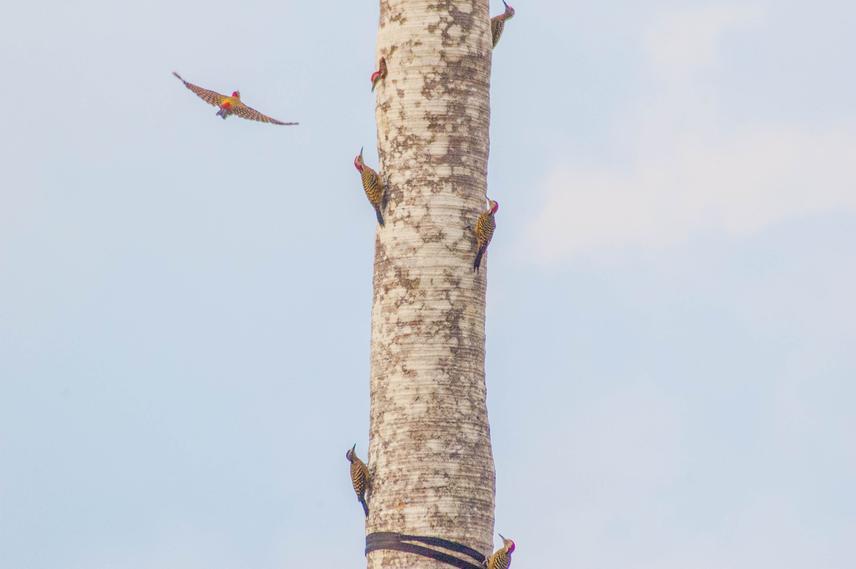Spencer Christian Schubert
Other projects
19 Apr 2017
Applications of Avian Seed Dispersal for Forest Restoration in the Dominican Republic and a Closer Look at Biodiversity across Farmland Landscapes
6 Jun 2018
Measuring the Role of Birds in Accelerating Forest Restoration and the Stability of Seed Dispersal Mutualisms in Disturbed Landscapes of the Dominican Republic
The goal of this project is to investigate how seed dispersal by two widespread endemic frugivorous birds in the Dominican Republic can be incorporated into strategies for accelerating forest restoration on abandoned farmlands.

Hispaniolan Woodpeckers (Melanerpes striatus) often form nesting colonies at isolated Royal Palm (Roystonea hispaniolana). © Holly Garrod.
The wet forests of Hispaniola (Haiti and the Dominican Republic) have been reduced by more than three-fold from their historic coverage of the island after centuries of poorly regulated timber harvest and clearing for agricultural activities. Consequently, many native bird populations have become increasingly restricted to forests at higher elevation and in relatively few protected areas, thereby reducing key seed dispersal services that they provide to forest ecosystems. The Hispaniolan Woodpecker (Melanerpes striatus) and the Palmchat (Dulus dominicus) are two endemic birds that are particularly resilient to forest fragmentation and can be found in remarkable local abundance in many rural agricultural landscapes throughout the Dominican Republic.
Among the most interesting aspects of their biology are their tendencies to nest colonially at isolated palm trees in open habitat and their generalist feeding behaviors that result in the dispersal of seeds from numerous native fruit-bearing plants. During the 2016 field season, our efforts will be focused primarily at a large private cattle ranch in the outskirts of Jarabacoa, La Vega, where we have been given permission to conduct our study. Using an experimental approach, we will evaluate different planted and remnant isolated trees commonly found in cattle pastures for their potential as epicenters of seed dispersal and regeneration of woody plants with particular emphasis on colony nest trees of the focal avian taxa. Our relationship with the local land owner will afford us a unique opportunity to investigate these successional processes during early stages of pasture abandonment by using fenced plots to exclude cattle and humans. Through our involvement with conservation partners in the region, we aim to seek out applications of this research for restoration projects and counsel land stewards on the successful management of remnant and secondary forest for sustaining plant and wildlife communities.